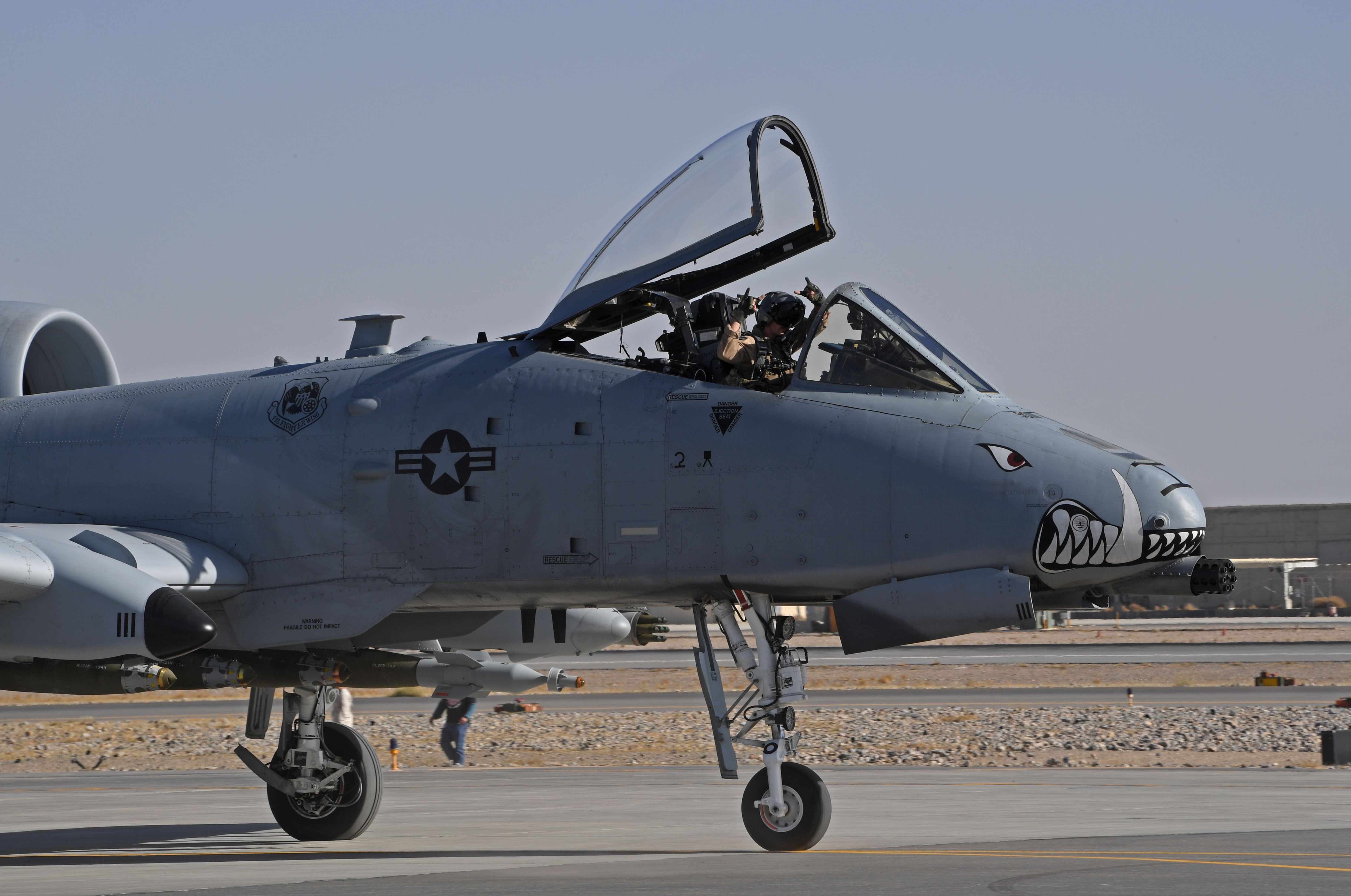
An A-10 Thunderbolt II pilot, assigned to Whiteman AFB, Mo., prepares to take-off from Kandahar Airfield, Afghanistan, Jan. 20, 2018. Air Force photo by SSgt. Sean Martin.
The Air Force is building up its strike and rescue presence in Afghanistan to support the US military’s increased operational tempo inside the country.
Air Forces Central Command on Tuesday said it has rerouted A-10s to Kandahar Airfield in Afghanistan as part of the new surge in forces there. The Warthogs, deployed from the Air Force Reserve’s 303rd Fighter Squadron at Whiteman AFB, Mo., were originally tapped to deploy to Incirlik AB, Turkey, in support of Operation Inherent Resolve. The aircraft flew their first combat mission within 24 hours of landing at Kandahar.
In addition, USAF also will send MQ-9 Reapers and HH-60G Pave Hawk rescue helicopters to Kandahar from elsewhere in the region, though the service did not say where these aircraft were previously based. The Pave Hawks are making a return to Afghanistan shortly after they transitioned out. In October, US Army CH-47 Chinooks took over the rescue mission from Pave Hawks based at Bagram.
“As we’ve applied increased pressure on the Taliban and their revenue sources with precision airpower, we’ve gained considerable momentum in our effort to force them to reconcile or face defeat,” AFCENT Commander Lt. Gen. Jeffrey Harrigian said in a release. “As US advisors move closer to the front lines in support of our Afghan partners, this additional airpower will give them the decisive advantage necessary to advance with confidence.”
F-16s from Shaw AFB, S.C., also are deployed to Bagram Airfield. In addition, other assets such as B-52s, F-15Es, and F-22s have recently conducted strikes in Afghanistan as a new effort to strike the Taliban’s drug infrastructure.
Last fall, the Air Force moved KC-135 Stratotankers to Kandahar, which is also home to Afghan Air Force A-29 Super Tucano strike aircraft, to provide fuel for increased air operations.
The deployment comes as US forces wrapped up their busiest year of airstrikes since 2011. In 2017 alone, US aircraft conducted 4,361 strikes in Afghanistan as the fight against ISIS waned.